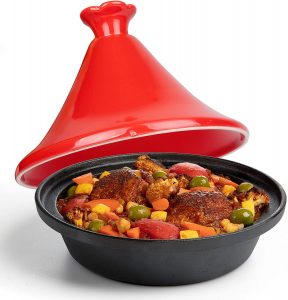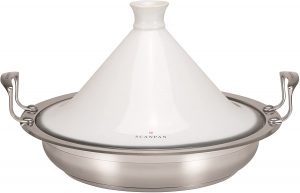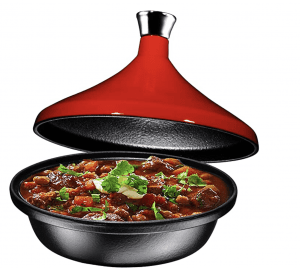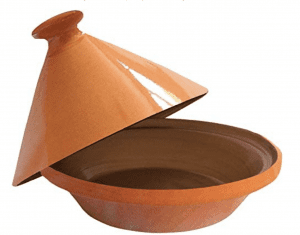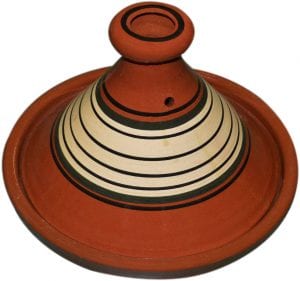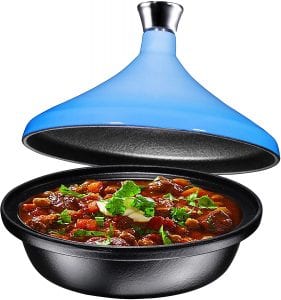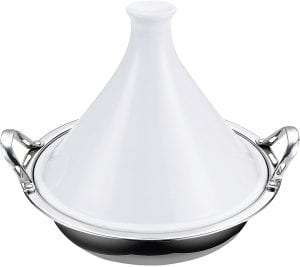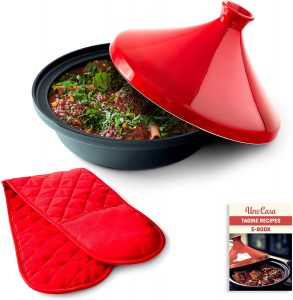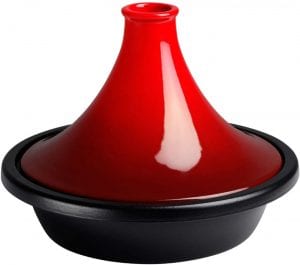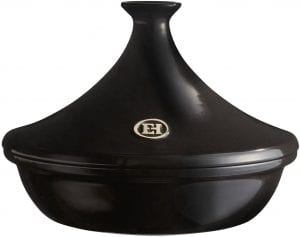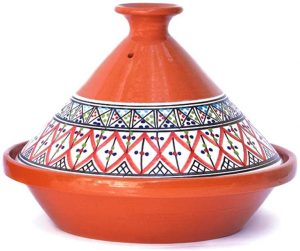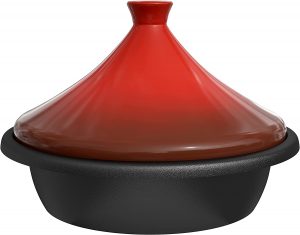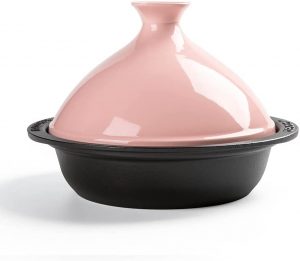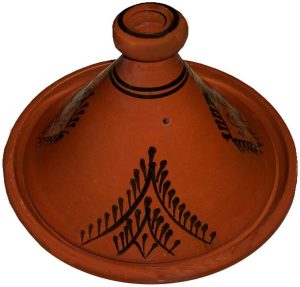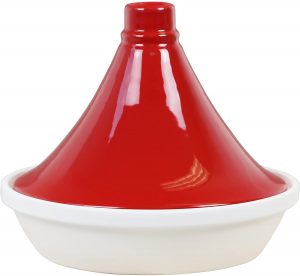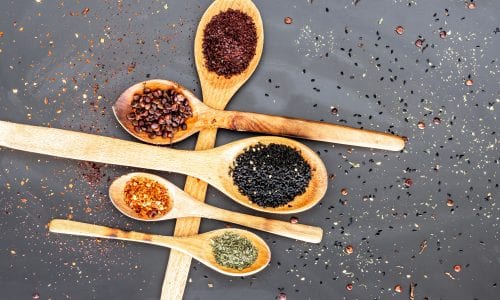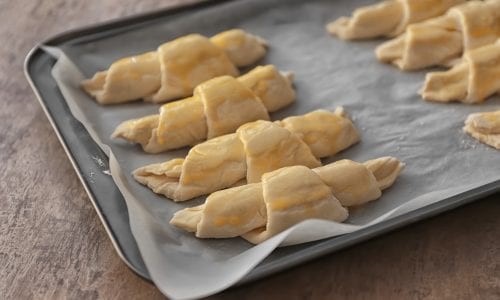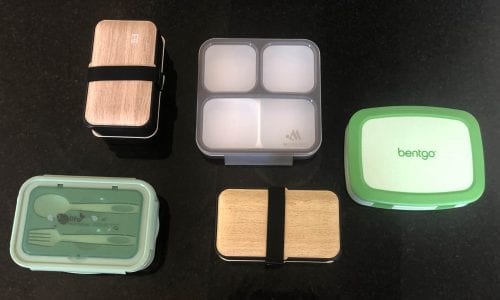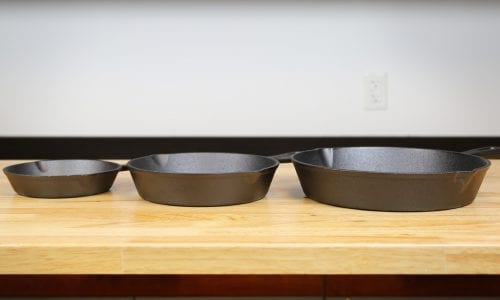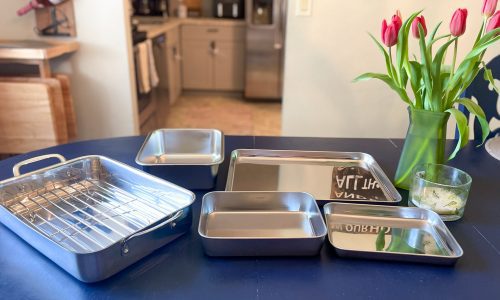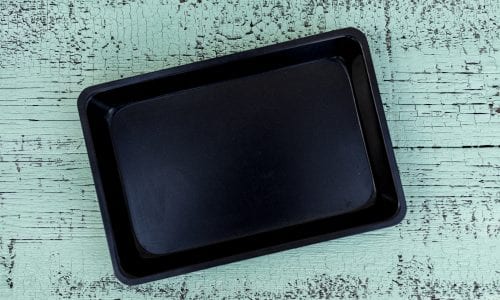The Best Tagine
We looked at the top 15 Tagines and dug through the reviews from 10 of the most popular review sites including and more. The result is a ranking of the best Tagines.
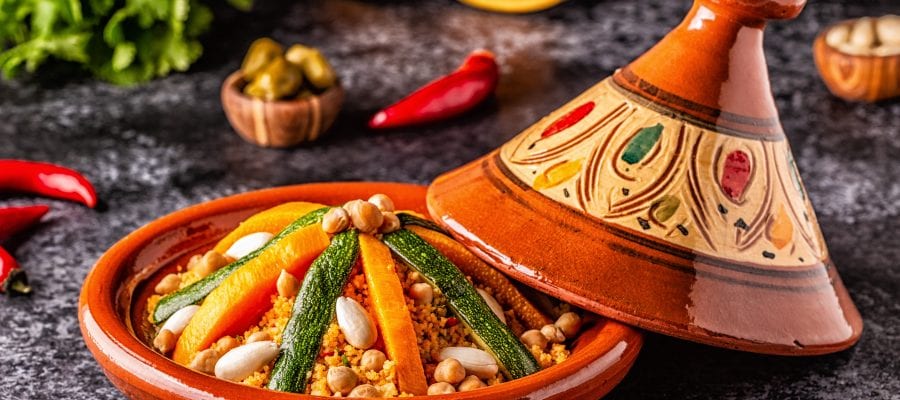
Our Review Process
Don't Waste Your Money is focused on helping you make the best purchasing decision. Our team of experts spends hundreds of hours analyzing, testing, and researching products so you don't have to. Learn more.
Our Picks For The Top Tagines
- 1. CucinaPro Round Home Chef Tagine, 4-Quart
- 2. Scanpan Impact Dishwasher Safe Tagine, 12.6-Inch
- 3. Bruntmor Cast Iron Enameled Tagine, 4-Quart
- 4. Raphael Rozen Stovetop-Safe Handmade Clay Tagine, 10-Quart
- 5. Treasure Of Morocco Seafood Cooking Tagine, 10-Inch
- 6. Bruntmor Cast Iron Moroccan Tagine Pot, 4-Quart
- 7. Cooks Standard NC-00378 Moisture Sealing Stainless Steel Tagine, 4.5-Quart
- 8. Uno Casa Moroccan Heat Circulation Tagine, 3.65-Quart
- 9. Le Creuset L2138-2767 Enameled Cone-Shaped Lid Tagine, 2.5-Quart
- 10. Emile Henry French Slow Cooking Tagine, 2.1-Quart
- 11. Kamsah Decorative Handmade Painted Tagine
- 12. Kook Stove Safe Cast Iron Base Moroccan Tagine, 3.3-Quart
- 13. M-COOKER Enameled Dishwasher Safe Cast Iron Tagine, 3-Quart
- 14. Treasures of Morocco Easy Clean Lead-Free Tagine
- 15. Reston Lloyd Hand Painted Natural Tagine, 2.5-Quart
If you love preparing classic Moroccan dishes, you'll want to grab this stylish tagine. It's heat-safe in temperatures of up to 500 degrees Fahrenheit and perfect for cooking everything from hearty stews to chicken and vegetables. This model is made from a durable cast iron and has a large 4-quart capacity.
Economical OptionWhen it comes to budget-friendly picks, this tagine tops our list.
The mirrored finish on this tagine sets it apart from other models in the market. It's also safe to use on any cooking surface, including gas, electric and induction stovetops. You can even put it in the oven. Since the tagine is dishwasher safe, clean up is also a breeze.
Attractive Stainless SteelEven heat distribution is what you can expect from this tagine.
This cast iron tagine can withstand high oven temperatures, offering more flexibility. The stunning blue lid seals in moisture and keeps steam inside while cooking. The pot requires minimal seasoning, and can be cleaned in the dishwasher.
Stylish Pick That Can Withstand High TemperaturesThis tagine is oven safe up to 500 degrees Fahrenheit.
You'll find this tagine in a choice of blue, burgundy, red or clay. It's larger in size than other models, which is best if you're preparing a meal for a big family. The tagine is stovetop and oven safe in temperatures of up to 300 degrees, and although you'll need to wash it by hand, it wipes clean with ease.
Recipe Book IncludedWith this tagine, you'll be able to prepare everything from seafood to chicken to vegetarian dishes.
Buying Guide
If you’re thinking of making a Moroccan or North African dish filled with aromatic sweet and savory flavors, you will probably get the best results from a tagine. This traditional cookware consists of two pieces: a wide pot and a conical-shaped lid. The pot typically has a wide base to fit in a large quantity of food, while the tight-fitting lid is designed to keep the steam inside, circulating throughout the food while it slow cooks. The condensation drips back onto the pot, keeping the food inside tender and moist.
Traditionally, tagines are used over a charcoal fire. However, they can also be used on the stovetop or in an oven depending on the material they are made out of. A classic tagine is made out of earthenware, but you can also find some that are made from metal or flame-proof glazed ceramic. Keep in mind that some tagines on the market are just designed to be serving dishes, and cannot be used in an oven or on the stove.
If you’re using a clay tagine, note that it requires special care. You will need to season the pot before it can be used. By seasoning the tagine, you seal the clay, making the pot more durable for cooking. Begin seasoning your tagine by soaking it in water for at least two hours. After that, let it air dry. Brush the pot and the lid with olive oil, both inside and out. Then, you need to put it in a cold oven and set it to 300 degrees Fahrenheit, leaving it in for seven to 24 hours. After that, carefully take out the tagine, and brush the inside with olive oil again. After letting the oil soak for a few hours, your tagine is seasoned and ready to use.
Why we recommend these tagines?
Products Considered
Products Analyzed
Expert Reviews Included
User Opinions Analyzed
Our experts reviewed the top 15 Tagines and also dug through the reviews from 10 of the most popular review sites including and more. The result is a ranking of the best of the best Tagines.
DWYM is your trusted roduct review source. Our team reviews thousands of product reviews from the trusted top experts and combines them into one easy-to-understand score. Learn more.
What to Look For
- The first thing to consider when buying a tagine is how you want to use it. If you’re looking to just use the tagine as a serving dish, then you don’t need to worry about whether it can be used in an oven or on the stovetop. Most tagine serving dishes come in bright colors with intricate patterns and make quite the impression at the dinner table.
- For cooking, you will be able to find unglazed clay tagines, which require seasoning before use. You can also find glazed tagines, which are ready to use. The glaze makes the pot more durable, and also stops the food from sticking to the bottom. There are other materials used to make tagines as well, such as stainless steel, cast iron and ceramic. These materials are more durable than clay and don’t require a heat diffuser as the traditional material does.
- While classic tagines typically don’t have handles on the side, they can be really helpful to use in the modern kitchen. Having a tagine with handles makes it easier and safer to move the pot in and out of the oven or on and off the stove.
- While clay and cast iron tagines require special care and cleaning instructions, most ceramic and stainless steel tagines can be cleaned easily in the sink. Some can even be placed in the dishwasher, making cleanup a breeze after a delicious meal.
- One of the most essential components of using a tagine is keeping the steam and moisture inside the pot with the conical lid. As a result, you’ll want to look for a set that has a tight-fitting lid. If the lid can’t seal with the pot, then the moisture will escape during cooking, resulting in a dry and unappealing meal. Be sure to get a tagine where the lid is designed to fit tightly over the pot.
More to Explore
Cooking food in a tagine is a simple process that even beginner cooks can master. Begin by bringing your tagine to room temperature. If it’s stored in the basement or garage, for example, you’ll want to warm up the pot first before putting it into the oven to avoid cracking.
Saute your onions and spices lightly in a frying pan, and then transfer them to the bottom of the tagine pot. Add in the meat, vegetables and grains, and pour over the liquid. Keep in mind that the steam will circulate as it cooks and the condensation will go back into the dish, so you don’t need to add too much liquid to the pot.
Cover the pot tightly with the lid and then place in the oven or on the stove for several hours, according to the recipe. Don’t open the lid until the meal is cooked, otherwise, the steam will escape. You can serve your meal in the same vessel, but be sure to place a coaster under the pot, so you don’t burn your table.

